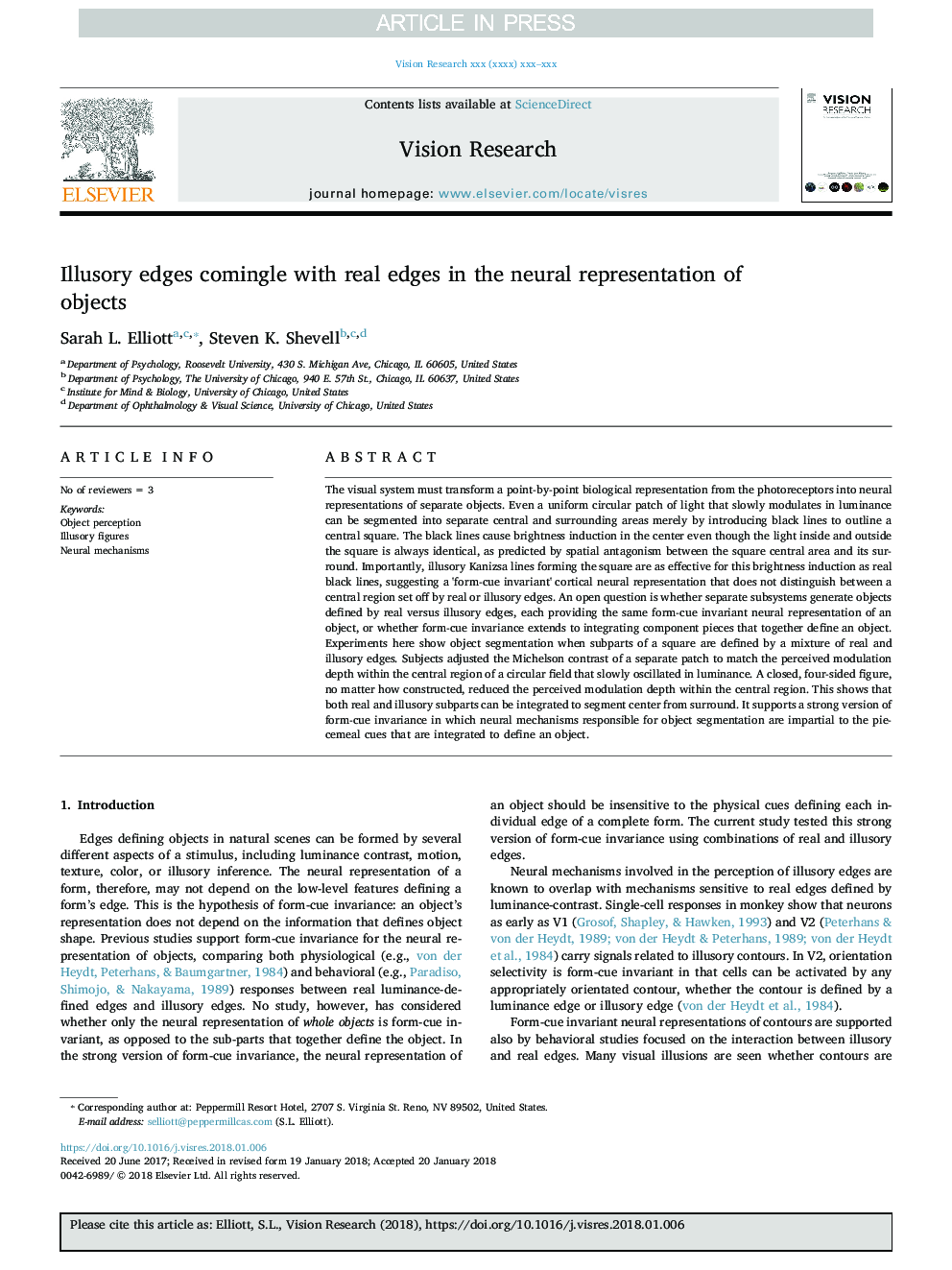| Article ID | Journal | Published Year | Pages | File Type |
|---|---|---|---|---|
| 8795320 | Vision Research | 2018 | 5 Pages |
Abstract
The visual system must transform a point-by-point biological representation from the photoreceptors into neural representations of separate objects. Even a uniform circular patch of light that slowly modulates in luminance can be segmented into separate central and surrounding areas merely by introducing black lines to outline a central square. The black lines cause brightness induction in the center even though the light inside and outside the square is always identical, as predicted by spatial antagonism between the square central area and its surround. Importantly, illusory Kanizsa lines forming the square are as effective for this brightness induction as real black lines, suggesting a 'form-cue invariant' cortical neural representation that does not distinguish between a central region set off by real or illusory edges. An open question is whether separate subsystems generate objects defined by real versus illusory edges, each providing the same form-cue invariant neural representation of an object, or whether form-cue invariance extends to integrating component pieces that together define an object. Experiments here show object segmentation when subparts of a square are defined by a mixture of real and illusory edges. Subjects adjusted the Michelson contrast of a separate patch to match the perceived modulation depth within the central region of a circular field that slowly oscillated in luminance. A closed, four-sided figure, no matter how constructed, reduced the perceived modulation depth within the central region. This shows that both real and illusory subparts can be integrated to segment center from surround. It supports a strong version of form-cue invariance in which neural mechanisms responsible for object segmentation are impartial to the piecemeal cues that are integrated to define an object.
Keywords
Related Topics
Life Sciences
Neuroscience
Sensory Systems
Authors
Sarah L. Elliott, Steven K. Shevell,
